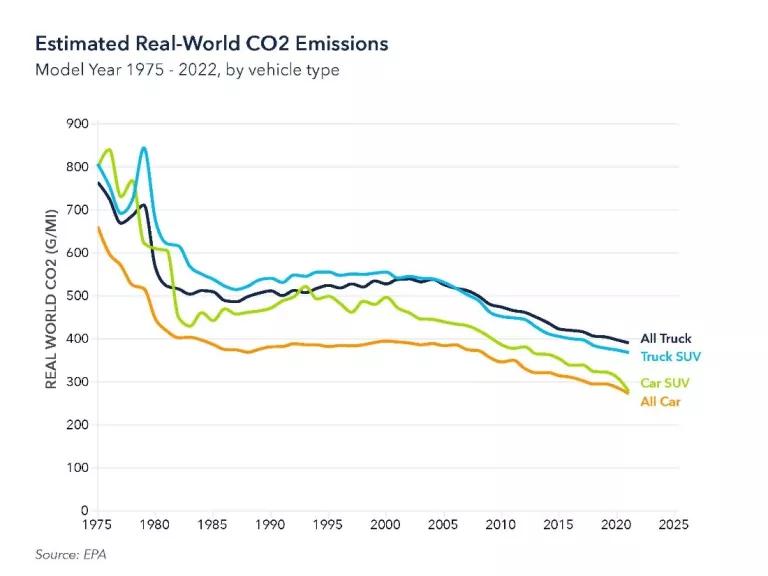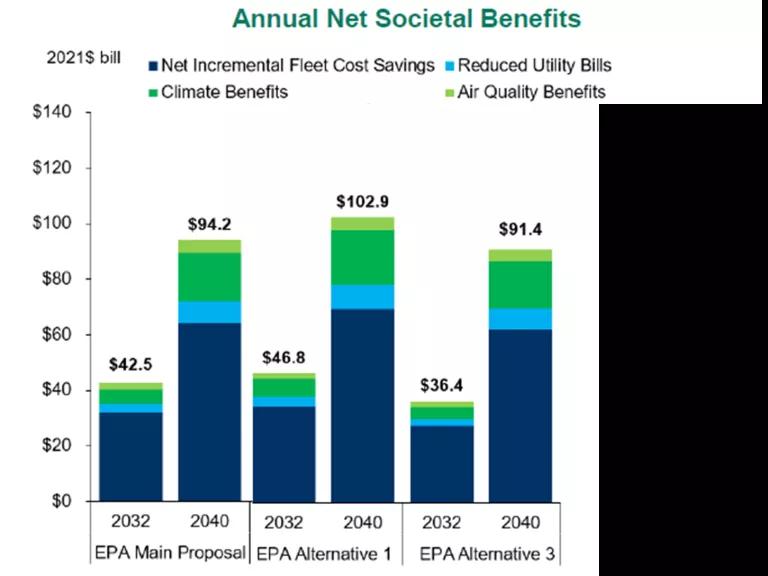EPA's Vehicle Standards: Just the Facts
We are on the road to cleaner vehicles. It’s up to EPA to issue strong standards soon so that we can get to where we all know we need to go.

Late afternoon traffic on Highway 36 just outside of Boulder, Colorado.
The U.S. Environmental Protection Agency (EPA) is set to issue standards for cars, SUVs and pickup trucks in the coming weeks, rules that will help reduce the nation’s largest source of carbon pollution.
There's been a lot of speculation in the press recently about how strong the EPA standards will be. While we do not know what EPA will do, we are optimistic that the standards EPA is about to issue will make a major reduction in vehicles' dangerous carbon pollution.
EPA standards have already been cutting pollution since 1975, and today’s new cars and light trucks emit 61% less than models from back then. In every case, EPA sets pollution limits, and then it’s up to the automakers to figure out how to achieve those reductions. But there is more that needs to be done. Given the climate crisis that’s now so apparent, it’s clear we need to accelerate the road to cleaner air, human health, and a safer climate.
What are the rules?
EPA’s car and trucks emissions standards are focused on reducing vehicle pollution on a grams of carbon dioxide (CO2) per mile basis. EPA sets an average stringency across an automaker’s total vehicle fleet, and the average gets incrementally lower every year. This is aligned with decades worth of standards that EPA has implemented. These annual reductions translate directly to improved air quality and human health.
The standards only affect new vehicles, and there is flexibility for automakers to meet these standards. For example, automakers can comply by producing more electric vehicles (EVs), hybrid or plug-in hybrid vehicles, or cleaner internal combustion engine vehicles. While many have framed these rules as an EV mandate, it will be up to automakers to decide the best way forward—just as they have done for decades.
What’s clear is that for decades, EPA’s standards have worked, despite what some automakers and the oil industry may claim. Just as the oil industry and some auto dealers are whining now, industry has complained about EPA’s standards every step of the way—but once the rules are in place automakers, have shown they can cut pollution while providing the vehicles Americans want to buy.

Different alternatives
When EPA proposed these regulations last year, it issued one main proposal, as well as several different alternatives. The main difference between the alternatives is the pace of reduction to the 2032 goal. These standards will kick in in 2027, after the current standards end.
| 2032 gCO2/mi Stringency (From EPA) | Cumulative CO2 reductions (MMT) through 2032 (From independent analysis) | Cumulative CO2 reductions (MMT) through 2040 (From independent analysis) | Description | |
| EPA Proposal | 82 | 211 | 1,544 | EPA’s proposal, which includes faster reductions in the early years |
| Alternative 1 | 72 | 275 | 1,793 | The most stringent proposal from EPA |
| Alternative 3 | 82 | 144 | 1,373 | A linear slope of stringency |

EPA's draft alternatives stringencies by CO2 grams/mi from 2026-2032
Source: EPA
Given the climate crisis and the outsized role vehicle emissions play in furthering it, EPA should adopt the strongest rules possible. An analysis by Environmental Resources Management shows that EPA’s vehicle standards would be one of the largest climate regulations in United States history. And it would also provide billions of dollars in benefits in excess of costs. The stronger the standards, the greater the economic benefits, this analysis shows.

Source: Analysis by Environmental Resources Management
While stronger standards provide the most benefits, the EPA proposal and each of the alternatives described above would both provide significant carbon reductions and consumer benefits. For example, while Alternative 3 would result in less carbon reductions this decade, over the next 30 years it would result in more than 7 billion metric tons of carbon emissions reductions, according to EPA’s regulatory analysis. For context, that’s more than the entire U.S. economy releases today.
EPA’s regulations are feasible
Since these rules were proposed last year, they have only become more feasible to achieve. EPA is anticipating that automakers will achieve compliance with the regulations through an increasing number of zero-emission vehicles. This estimate is due to the billions of dollars that automakers have already invested in the transition to zero-emission vehicles—making this one of the most cost-effective compliance pathways. But EPA failed to include all the ways automakers could continue to make gasoline vehicles pollute less. Our analysis shows that combining increased production of zero-emission vehicles with simple, cost-effective changes to existing internal combustion engines would make these standards even easier to meet.
Since the proposal was released, electric vehicle sales have continued to increase—with more than one million EVs sold through September 2023, and a record 11.5% of new vehicles sales were electric in December. It has always been less expensive to fuel and maintain an electric vehicle; now, with the incentives from the Inflation Reduction Act and more models available, the sticker price of new EV and gasoline vehicles is almost comparable.
One barrier towards widespread EV adoption has been the perceived lack of electric vehicle charging stations available. But that’s changing quickly. Several announcements from the past year will help to alleviate this barrier—including the federal tax credit for charging stations, seven major automakers joining together to install 30,000 chargers throughout the country, almost all car makers adopting a standard plug that would allow access to Tesla’s robust supercharger network, and Walmart announcing plans to install 10,000 fast chargers at their stores around the U.S.
Any transition won’t be without unexpected twists and turns in the road, and the transition to cleaner cars is just that, a transition. It won’t happen overnight. But with strong EPA standards in place, companies have the opportunity to do what Americans do best: innovate, find solutions, and then get to work and implement them. We’re already seeing this occurring with new models, new battery technologies, investments in charging and even new companies gearing up to recycle the batteries.
We are on the road to cleaner vehicles. It’s up to EPA to issue strong standards soon so that we can get to where we all know we need to go.




